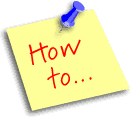
Write an Essay
Tips on writing that all-important A-grade college essay

|
Structure your essay to help your reader |
|
|
All documents need a start, a middle and an end. Traditionally, we think of the Introduction, Body and Conclusion as the key parts of an essay. Logically, this helps us set the context for the essay (introduction), present the facts and develop the arguments (body) and summarize the main points or the answer to the question set (conclusion).
Writing an essay Introduction
This introduces the main idea of your essay and draws the reader into the subject. A good introduction gets to the heart of the subject and captures the interest of the reader. It should:
Most students write poor introductions that needlessly repeat information and turn off the reader with too much background information. If you want to gain a top grade for your essay, you have to start strongly and gain your readerís attention immediately. This means concentrating on either writing a powerful summary of the essay or directly answering the question set. In trying to gain the readerís attention, you do not need to say anything controversial or mind-blowing. All you need to do is concentrate on writing the most relevant information. Dont write a mystery novel Make your introduction factual Weak opening paragraph
Stronger opening paragraph
Use the journalistic technique of basing your information around the Five-Ws in writing: Who, What, When, Where and Why. These will help you keep to solid information. Remember, dont use your introduction as a warm-up make it direct, relevant and impressive so it sets the tone for the rest of the essay. Writing an essay Body
This is 80-90 percent of the essay and must satisfy the readers appetite. To do this, the body of the essay must reflect solid research, show a clear understanding of the subject, and develop your points logically. Writing an essay Conclusion The conclusion often:
The conclusion is vital. It is the last impression the reader has of the essay. Use it well, making sure your essay doesnt fizzle out. Make it a strong statement, confidently answering the question, summarizing the position, and reviewing the topic. If you are in doubt what to put in the conclusion, think about the key information or argument the essay has presented and repeat it in a short, direct form. |
|